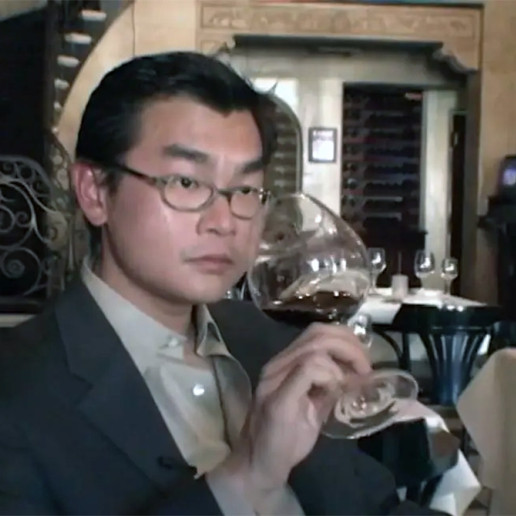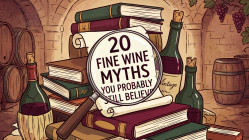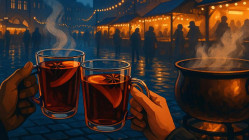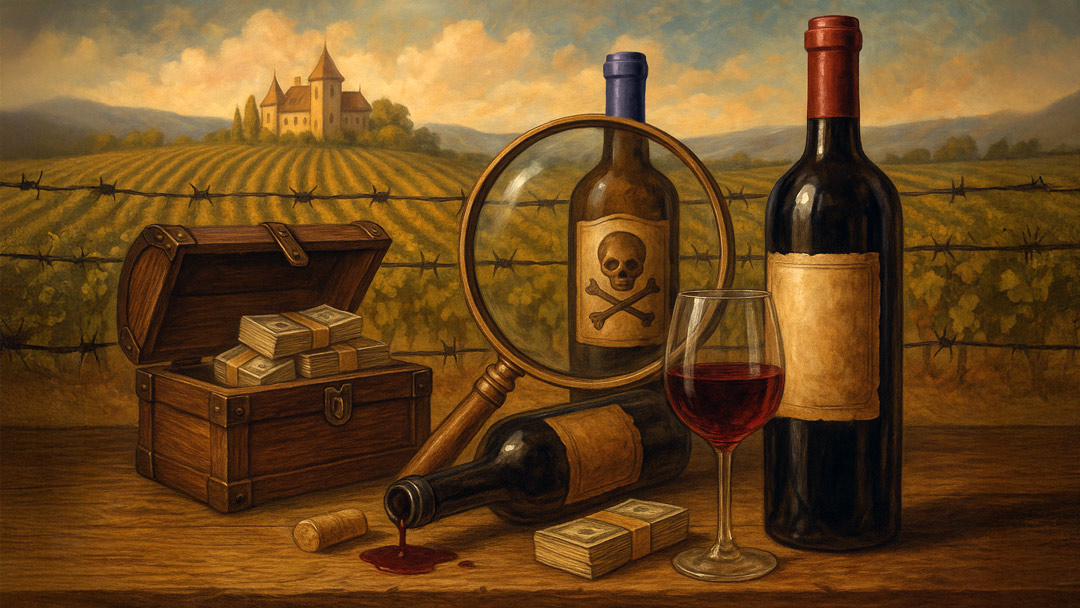
Wine Fraud: Tricks, Scams, and How to Avoid Them
Wine has always had a way of seducing the senses. It’s swirled in glasses at royal courts, raised in celebration, tucked away in vaults, and poured to impress. But behind some of those gleaming bottles and grand labels lies a story far less elegant. Wine fraud, as old as wine itself, has been quietly uncorking trouble for centuries.
For every legitimate bottle of fine Burgundy resting in a collector’s cellar, there’s a risk that somewhere, someone’s peddling a fake. It might be a forgery so convincing even seasoned experts have been fooled, or a slapdash scam that falls apart at the first whiff of vinegar. Either way, it’s a problem that has cost collectors millions and left more than a few red-faced sommeliers swirling their regrets.
This isn’t just a curiosity for the history books. Wine fraud is very much alive, and for today’s investors, it’s a risk worth understanding. The good news? The more you know, the less likely you are to fall for it. And unlike some investment guides, this one doesn’t require a degree in biochemistry or a working knowledge of label adhesive technology.
We’ll look at the history, the headlines, and the high-stakes games of deception. We’ll explore how fakes are made, how they’re discovered, and what the wine world is doing to stop them. Most importantly, we’ll share how legitimate wine investment companies protect collectors and their portfolios from ever letting a counterfeit bottle slip through the cellar door.
This is the story of how a drink built on trust became one of the most fascinating battlegrounds for fraudsters and what you can do to stay ahead of the swindle.
Fakes, Frauds, and Fish Bladders
The Modern Wine Boom and the Birth of Big Fraud
Rudy Kurniawan: The Billion-Dollar Bluff
Provenance and the Power of Paper
Fakes, Frauds, and Fish Bladders
Long before counterfeit wine became the stuff of FBI investigations and auction house scandals, people were already trying to stretch, sweeten, or swindle their way through a barrel. Wine, after all, has always been more than just a drink. In ancient societies, it was currency, medicine, ritual, and status which made it ripe for exploitation.
The Romans, who wrote extensively about wine and drank it with impressive enthusiasm, were also well aware of its potential for trickery. Records from around the first century AD mention additives like honey, seawater, herbs, chalk, and even lead, not for flavour but for preservation and, more often, deception. If your Falernian tasted oddly metallic, it wasn’t just the amphora.
Fast-forward to the Middle Ages, and winemakers were still dabbling in a bit of alchemy. Chalk was commonly added to balance overly acidic wines, while spices were sometimes used to mask faults in wine. At one point, a popular technique involved fining wine using dried fish bladders (isinglass), which may sound like a fraudulent practice, but was actually a rudimentary clarifying agent. In fact, isinglass is still used today in some traditional winemaking processes, especially for white wines, though modern alternatives are often preferred for vegan or more transparent labelling. It’s a reminder that not all additives are villainous. Some, over time, became part of the legitimate winemaking craft.
Still, not everyone played by the rules. By the 16th and 17th centuries, records from across Europe mention more blatant manipulation. Wine was sometimes bulked out with water, sugar, and even red dye made from elderberries or boiled beetroot. In colder years, when grapes failed to ripen properly, chaptalisation, the addition of sugar to increase alcohol, became common. This was later legalised in many regions, but its early use was far more clandestine.
In Germany, there were reports of unscrupulous merchants colouring white wine with lead salts to mimic the deeper hue of better vintages. In parts of England, tavern owners were known to serve mixtures of cider, vinegar, and spices and pass it off as “claret.” Some even took things a step further.
Bottles were sometimes tampered with without ever being opened. Fraudsters would carefully remove the cork using special tools, alter or replace the wine inside, and then reseal the bottle with a new capsule and a cork branded to look authentic. To the casual buyer, it looked completely untouched. It’s a trick that has surprisingly survived into the modern wine world, where many fake bottles still rely on clever re-corking to fool collectors.
Governments and guilds did occasionally try to rein things in. In 14th-century France, for instance, there were laws against blending wines from different regions and passing them off as something of higher quality. These were mostly ignored. Fraud wasn't just a fringe problem. It was part of the trade.
Even in religious circles, where communion wine held spiritual significance, there were grumbles about merchants hawking thin, sour concoctions not fit for divine consumption. If the saints had a cellar, they probably had to padlock it.
Some of these historical tactics evolved into accepted winemaking practices. Others were pure deception. The line between the two was often thin and poorly policed. But whether the motivation was to preserve, improve, or flat-out con, the goal was the same. To sell something that seemed better than it really was.
The point is, wine fraud didn’t arrive with the auction houses. It has always been there, evolving alongside our love affair with the grape. And just like wine itself, the methods and stakes only grew more sophisticated over time.
The Modern Wine Boom and the Birth of Big Fraud
By the mid-twentieth century, wine had outgrown the taverns and terraces of Europe. What had long been a local luxury began to flow into international markets, driven by global trade, rising affluence, and a growing thirst for prestige. Fine wine was no longer just a drink. It became a symbol of taste, wealth, and sophistication, and where there’s status, there’s always someone willing to fake it.
As new markets opened up, collectors and connoisseurs from New York to Tokyo began chasing the great names of Burgundy, Bordeaux, and beyond. Bottles that once gathered dust in family cellars were now commanding eye-watering sums at auction. Wine critics like Robert Parker turned palates into power, and suddenly, a high score could turn a humble bottle into a blue-chip investment.
All of this made fine wine not only desirable but also incredibly profitable. And that, as it tends to do, attracted the wrong sort of attention.
While early fraudsters might have been village blenders sneaking in a little Algerian red to bulk out their Bordeaux, the modern breed came armed with printers, provenance, and an understanding of market psychology. They didn’t just tamper with the wine. They tampered with the story.
Labels were copied. Bottles were aged artificially. Corks were faked, reused, or even recreated with vintage stamps. Some forgers went so far as to source genuine capsules and labels from empty bottles auctioned online, then refilled them with cheaper wine and resold them for tens of thousands.
Perhaps the most astonishing part was how long some of these schemes went unnoticed. After all, most buyers weren’t popping their Domaine de la Romanée-Conti the moment it arrived. Many of these bottles were destined for storage, investment, or display, not for drinking. This gave fakes a surprisingly long shelf life before suspicion crept in.
It wasn’t until the early 2000s that the wine world started to fully wake up to the scale of the problem. The next decade would bring arrests, trials, and some very red faces at some very respectable establishments.
And at the centre of it all stood one man whose story was stranger than anything the wine world had ever seen.
Rudy Kurniawan: The Billion-Dollar Bluff
If wine fraud had a poster boy, it would be Rudy Kurniawan. Suave, mysterious, and alarmingly convincing, Rudy didn’t just con the wine world. He seduced it.
He first appeared on the scene in Los Angeles in the early 2000s, claiming to be from a wealthy Indonesian-Chinese family with an extraordinary cellar and an even more extraordinary palate.
He began buying wines at an astonishing rate, spending millions at auction. His presence was so prominent that he earned the nickname “Dr Conti” for his fondness for Domaine de la Romanée-Conti.
But Rudy wasn’t just a buyer. He was a seller, too. Between 2003 and 2006, he offloaded vast quantities of rare bottles, many of which fetched record prices. Auction houses couldn’t get enough of him. Collectors scrambled to get on his good side. He poured freely at tastings, donated lavishly, and made sure everyone saw him as a trusted insider.
There was just one problem. Much of his cellar was fake.
Rudy had set up a veritable wine forgery lab in his home, complete with printers, glue, typewriters, and hundreds of empty bottles sourced from restaurants and collectors. He would mix older wines to mimic the taste profile of sought-after vintages, top them up with a splash of something impressive, then dress the bottles up in custom labels and reseal them.
In 2006, suspicions began to rise when he attempted to sell bottles of Clos St Denis from Domaine Ponsot dated as far back as 1945. The only catch was that the domaine didn’t produce that wine until 1982. It was an awkward detail, and it blew the cork right off his carefully bottled façade.
The real unravelling came in 2012 when the FBI raided his home. Agents found wine recipes scrawled on paper, stacks of counterfeit labels, and evidence of industrial-scale tampering. At his trial in 2013, prosecutors estimated that Rudy had swindled collectors out of tens of millions of dollars. He was sentenced to ten years in prison and ordered to pay restitution and forfeit his ill-gotten gains.
The scandal rocked the wine world. Some of the finest names in the business had been duped. Top auction houses had been caught napping. And collectors were left holding worthless bottles that had once been hailed as treasures.
The lesson? Even in the refined world of fine wine, charm and a good story can go a long way, sometimes too far. Rudy’s operation was audacious, but it also exposed just how little scrutiny had been applied in a market driven by prestige and assumption.
His legacy? A far more cautious, questioning wine investment world and an industry forced to take a long, hard look at its own vulnerabilities.
How Wine Gets Faked
Faking fine wine isn’t just about sticking a new label on a cheap bottle and hoping for the best. At the higher end of the fraud spectrum, it’s a craft. A dark one, admittedly, but a craft nonetheless. The most successful wine forgers use a blend of technical know-how, psychological insight, and a bit of theatre. The goal isn’t just to imitate the wine. It’s to imitate the entire experience of authenticity.
Let’s start with the basics. Labels are the most visible part of the bottle, and they’re often the first thing to be faked. Forgers use aged paper stock, period-accurate fonts, and ink that matches the era. Some go so far as to stain the labels with tea or wine to give them that lived-in look. Others try to mimic wear patterns that would be expected on older bottles, including frayed edges or faded printing.
Next comes the bottle itself. This is trickier. Older glass has a different composition, weight, and colour tone compared to modern bottles. Serious fraudsters acquire vintage empty bottles through restaurants, auctions, or even online marketplaces. Once they have the bottle, they fill it with a blend of wines that loosely mimic the original. Sometimes, the liquid is decent, and sometimes, it’s barely drinkable, but either way, it rarely matches what the label promises.
Corks are another point of manipulation. They might be rebranded using heated stamps or extracted and replaced with minimal signs of disturbance. In some cases, counterfeiters manufacture entirely new corks, complete with fake branding and vintage markings. Capsules, the foil covering the top, can be removed and re-glued or replaced with reproductions.
And then there’s the paperwork. Forged provenance is perhaps the most damaging part of wine fraud. If a bottle comes with a supposedly impeccable history, letters from producers, auction records, and photographs of old cellars, people tend to lower their guard. These documents don’t need to be flawless. They just need to be convincing enough to avoid scrutiny.
Not all wine fraud is this elaborate. At the more casual end, restaurants have been caught refilling expensive bottles with cheaper wine. Some retailers have been known to mislabel or misrepresent bottles intentionally. And online, the usual rules of caveat emptor apply. If the price looks too good to be true, it probably is.
The scary part? Most fakes aren’t detected by taste. Investment-grade wine is rarely opened. It lives in storage or on a resale platform. This means the fraud can sit there quietly, waiting for the next buyer or the next. And by the time it finally gets uncorked, it’s usually far too late.
Provenance and the Power of Paper
In the fine wine world, a bottle is only as valuable as the story it carries. Provenance, the documented history of a wine’s ownership, storage, and source, is often the deciding factor between a bottle worth thousands and one that raises eyebrows. And, in the worst cases, suspicions.
The idea is simple. If you can trace a bottle from the producer to the current seller with reliable documentation at every step, you're far more likely to be looking at the real thing. If that trail disappears for twenty years in someone’s uncle’s basement, well, you’d be forgiven for asking a few questions.
This is where things get interesting. Forgers know how powerful paperwork can be, so they often try to fake that, too. It's not just about the label on the glass. It’s the receipts, the letters, the photos of the dusty cellar in Provence that give the bottle credibility. Some scammers have even gone so far as to fake auction records or forge communications between winemakers and collectors. All of it is designed to build a story that no one wants to poke holes in.
Collectors and investors often rely on these stories because opening the bottle to find out what's really inside just isn’t an option. Tasting the wine would be like taking a sledgehammer to a vintage watch just to make sure it’s not a replica. You want to trust the process.
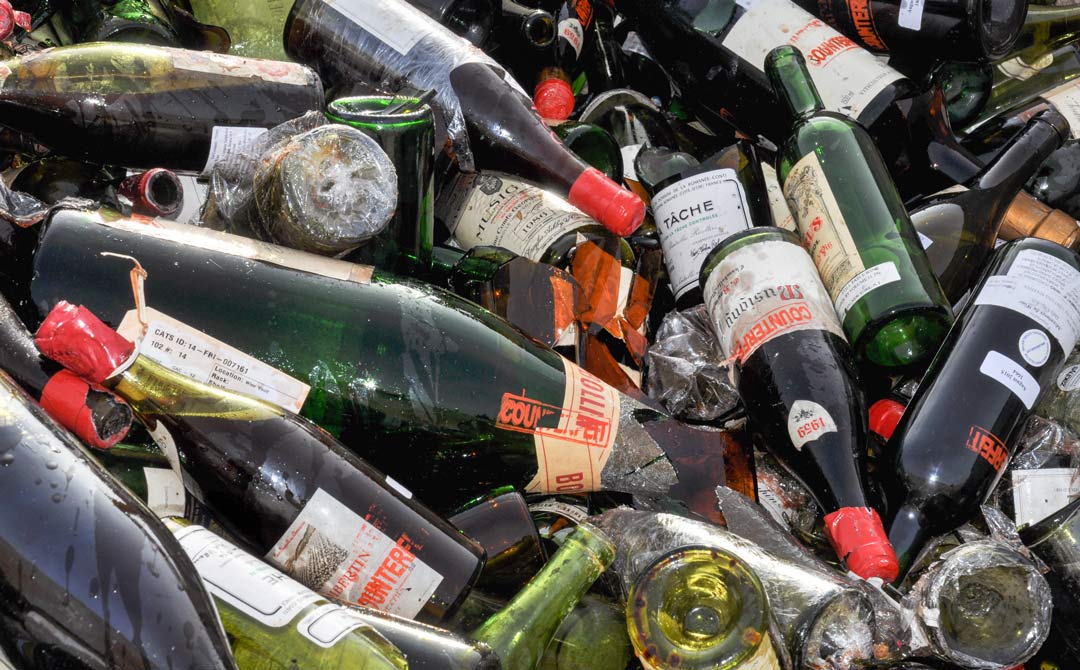
That’s why documentation matters so much. Certificates from respected merchants, warehouse intake logs, and original invoices from producers all add to the bottle’s credibility. The more complete and consistent the paper trail, the more confidence buyers can have. And for those investing in wine as an asset, confidence is everything.
Auction houses have come under increasing pressure in recent years to vet provenance more carefully. Some now refuse to sell bottles without a clear trail. Others employ specialists to verify labels, corks, and paperwork. Still, gaps remain. And in a market where reputation can outweigh scrutiny, some fakes still slip through.
For investors, the key takeaway is clear. Always ask where the wine has come from, who’s handled it, and what proof backs up the story. A wine with strong provenance will usually cost more, but it’s far cheaper than the cost of being duped.
Technology Joins the Fight
If counterfeiters have become more sophisticated, so too have the tools designed to stop them. While the romance of fine wine still lives in stone cellars and handwritten labels, the fight against fraud has gone high-tech.
One of the simplest yet most effective tools in the anti-fraud arsenal is serialisation. Many producers now engrave or print unique codes onto bottles or labels. These can be scanned and cross-referenced with the producer’s records to verify that the wine is genuine. Some codes even include QR functionality, allowing buyers to confirm authenticity through a secure website.
Then there’s spectroscopy, a technique that sounds like something from a science fiction film but is increasingly used in the wine trade. By analysing the molecular composition of the wine without opening the bottle, researchers can determine if the liquid inside matches the expected profile for that vintage and region. It’s not yet widely adopted outside academic or forensic settings, but it’s a glimpse of what the future might hold.
Laser etching has also emerged as a subtle but powerful safeguard. Some producers now mark bottles with microscopic identifiers that are difficult to replicate. These etchings don’t affect the appearance of the bottle but can be verified by professionals under magnification. Think of it as a fingerprint for fine wine.
More broadly, technology has changed the way wine is stored, tracked, and traded. Professional storage facilities now maintain digital inventories, complete with intake photographs, temperature logs, and movement records. These systems make it much harder for fakes to be slipped in quietly or swapped out over time.
One recent case illustrates just how effective these systems can be. A suspicious bottle surfaced during an attempted resale, and a check of its supposed storage history revealed an inconsistency. The wine had allegedly been stored in a bonded warehouse for years, yet there was no record of its arrival. The seller had paperwork, but the warehouse did not. That gap was all it took to halt the sale and uncover the forgery.
Of course, no system is perfect. Even with all these tools, the human element still plays a role. Someone has to care enough to ask questions, double-check the records, and, when necessary, say no to a deal that doesn’t feel quite right.
Technology helps. But awareness, scepticism, and proper storage still make up the first line of defence.
How to Spot a Scam
Spotting a fake wine isn’t always about peering at labels under UV lights or sniffing out suspicious aromas. Most wine frauds are caught not by sommeliers or scientists but by investors and collectors who know what questions to ask before they buy. You don’t need a lab coat. You just need to pay attention.
Let’s start with the most obvious red flag. Price. If a bottle of 1990 Pétrus is being offered at half the going rate by someone who just wants a quick sale, it’s worth asking why. Wine is not immune to good deals, but rare bottles don’t tend to fly under the radar. If the offer feels oddly generous, it might be hiding something.
Next, consider the source. Is the wine coming from a reputable merchant or from someone who “found it in storage” and wants to sell it fast? Reputable sellers will provide storage history, provenance documents, and clear answers. Casual sellers might offer vague backstories and a lot of urgency. Scammers often rely on pressure. They want you to act quickly, not carefully.
Packaging can also offer clues. Look out for misaligned or overly pristine labels on supposedly old bottles. Authentic older wines tend to show some wear, fading, scuffs, and slight label discolouration. A bottle that looks too clean might have had a recent makeover. At the same time, some fraudsters go overboard and artificially distress bottles to make them appear older than they are. Trust your instinct. If it looks like it’s been through a war but still smells like Merlot, something’s off.
One of the easiest things to check is whether the vintage and producer actually match up. This might sound obvious, but many frauds have been uncovered simply because someone realised the winery didn’t make that wine in that year. A quick online check can save a costly mistake.
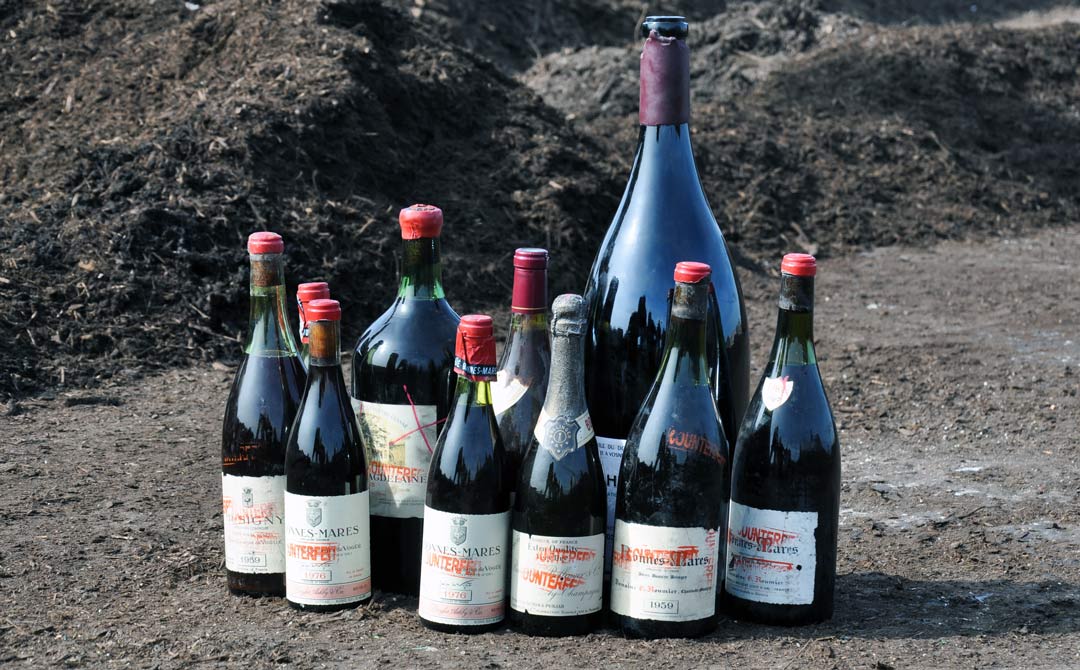
Be cautious of wines sold without paperwork. A rare wine with no traceable record is like a luxury watch with no serial number. It doesn’t automatically mean it’s fake, but it does mean the burden of proof is much higher.
And finally, don’t assume that high-profile platforms are immune. While auction houses and large marketplaces have improved their vetting procedures, they are not infallible. Some of the most famous frauds in wine history were pulled off under the noses of people who really should have known better.
So, if you're buying fine wine, take your time. Ask questions. Read the small print. And if anything seems fuzzy or too convenient, trust that nagging feeling. In a market where trust is everything, scepticism is your best investment tool.
Safe Cellars and Sound Investments
The good news in all of this is that wine fraud, for all its drama and deception, is largely avoidable. You don’t need a background in forensics or a blacklight to stay safe. You just need the right infrastructure, the right expertise, and a little common sense, or, better yet, access to professionals who’ve already built those safeguards into their entire process.
That’s where specialist wine investment companies come in. The most reputable ones have gone to great lengths to lock fraud out of the cellar. Take, for example, Cult Wines. As part of their process, every bottle that enters their system is subject to strict verification protocols. This isn’t just a quick visual check. Labels, capsules, corks, and fill levels are physically assessed.
Anything that looks out of place gets flagged and investigated long before it has a chance to reach a client.
All wines are stored in-bond in the UK, typically in professional storage facilities such as Coterie Vaults, where layers of security and traceability work together to protect each case. These warehouses are equipped with round-the-clock CCTV monitoring, restricted access, and dedicated photo studios to document bottles at the point of arrival. Inflows and outflows are tracked, ensuring that movements are logged, monitored, and accountable. It’s not a glamorous part of the wine world, but it’s an essential one.
Provenance is also key. Cult Wines only source cases with a clear, traceable history, ideally directly from the producer. However, if that’s not possible, then comprehensive documentation must accompany the wine at every stage through its journey. This paper, or digital trail, is critical not just for avoiding fraud but also for ensuring a wine’s value is preserved over time.
Insurance is already included in the company’s storage fees, covering investors against risks like damage, loss, or the rare case of fraud. It’s an extra layer of protection built into the foundation, not tacked on as an afterthought. When combined with professional storage, rigorous checks, and tightly controlled bottle movement, it allows investors to focus on their strategy, not on what might go wrong.
So, while the headlines may focus on scandal and deception, the real story for most investors is far more reassuring. When you partner with the right team, wine fraud becomes less of a threat and more of a footnote in someone else’s cautionary tale.
The Glass Half Full
Wine fraud may grab the column inches, but it’s not the heart of the wine world. It exists, yes, and it always has, but so do the systems, people, and practices that protect against it. For every fake Château Lafite that’s made the news, there are thousands of genuine bottles quietly appreciating in cellars and bonded warehouses, backed by real provenance and proper oversight.
The key for today’s collectors and investors isn’t to panic but to prepare. Understanding how fraud happens is the first step in avoiding it. The second is choosing partners and platforms that take authenticity seriously, with robust checks, secure storage, and clear documentation.
Wine is a tangible asset, but it’s also a cultural one. It comes with stories, legacies, and, occasionally, scandals. But that shouldn’t put you off. In fact, if anything, it should remind you just how valuable it can be. After all, nobody bothers to fake something that isn’t worth having.
So yes, fraud is part of the story, but it’s far from the whole picture. With the right tools and the right support, you can enjoy all the richness of the wine world without falling for the sour grapes. And whether you’re buying to drink, to hold, or to build a portfolio, there’s still far more to gain than to fear.
